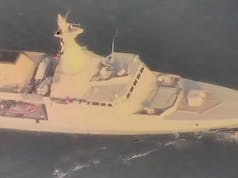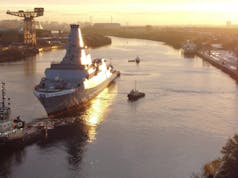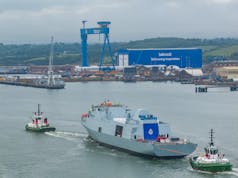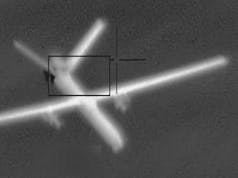Leonardo’s ULISSES system was used to automatically locate a number of simulated submarines in a live trials exercise.
Leonardo say it has proven the submarine-hunting capabilities of its new ULISSES acoustic sensor system in a live sea trial off the coast of Italy, meaning that development is on track for completion by the end of 2019.
Production will now take place in 2020 for deliveries the same year and Leonardo is in talks with a number of potential domestic and international customers.
According to the firm:
“ULISSES (Ultra-LIght SonicS Enhanced System) is an integrated acoustic sensor system designed to ‘listen’ for hostile submarines and determine their locations. Uniquely in the market, ULISSES incorporates ‘multistatic’ functionality, where the processor collects and exploits data from up to 64 distributed sonobuoys or dipping sonar sensors, which are processed in parallel.
It then uses the multiple sources of information to triangulate the location of potentially hostile vessels. Leonardo announced the development of the acoustic system, in partnership with Ultra Electronics (providing miniaturised sonobuoys and multistatic technology) and L3 Technologies (providing dipping sonar), at the 2018 Farnborough Air Show. The system is now available to order.”
The firm say that the recent sea trials began with Leonardo deploying various types of Ultra Electronics supplied sonobuoys, including some with GPS, from a ship. The ULISSES processor was then used to quickly and accurately locate a number of simulated under-sea targets, automatically marking their coordinates on a map on the operator’s workstation.
Leonardo say that the success of the trials means that development of the system is on track to wrap up by the end of December, with production ready to start next year.













Could this be used on say a Minesweeper/MineHunter/OPV sized Ship as an ASW Force Multiplier ?.
Yes, but not in a way that would make any sense. Multistactic sonar relies on a mix of active and passive sonar. To do that you need to spread those around a wide area. For that you need a helicopter or an MPA seeding an area so that the main system can then process the received signals. You could do it near to shore, but really you need a helideck. I expect we’ll see the more expensive sonar buoys, which are very expensive be deployed from Skeldar/Hero type RUAS via winches in the near future alongside Merlin deploying larger systems alongside the usual sonobuoys.
If you’re doing that and one shows up an SSN and you’re in a MCMV vessel you’re up the creek without a paddle…
For good cheap ASW, what about active pingers hanging from drone copters and a Frigate with a powerful towed array and an ASW helo on deck ready?
I suspect that along with USV’s and UUV’s deployed from the T26’s that may be the norm in the future.
Rudeboy – thanks,would I be right in saying that the Sonar Buoys once deployed are then lost (ie they are a consumable) ? If as you say they will get more advanced obviously an Enemy can retrieve them and look at their tech/construction.
They are a consumable, but they can sink when they expire. The Sovs used to go around NATO exercises trying to fish them out of the sea.
But like any consumable you have to wonder how many we have in stock. It’s known we have large numbers, but do we have enough, particularly of the most advanced types to sustain a war. Active buoys aren’t cheap, but passive tend to be. Making RUAS work in concert with a Merlin as a ‘mini-dipper’ would be a real headache for any sub skipper. Add in a couple of the smaller passive type to be dropped by the RUAS when shifting position and you’d have a sonar field that could move rapidly but also be spread incredibly quickly. Which is a subs worse nightmare.
yes thats right they are not retrieved. Buoys are set to deploy at various depths, connected to an aerial which is left on the surface, and they are set to operate for up to 8 hours.
Buoys cost from £200 to about £5000 depending on type.
i suspect this is an update to the aqs 903 developed by Marconi and fitted to Merlin HAS Mk2, or maybe even a cheaper version for export. 64 buoy processing is really awesome and will allow buoy seeding, hence the mention of a GPS buoy.